Everyone gets a little overly ambitious at times. Often, this coincides with the changing of the seasons or other transitions. We all partake in spring cleaning, and most of us have gotten swept up in the Christmas rush a time or two. This year, as the school year wound down for my kids, I took a look at the vast emptiness of the calendar over the coming months and decided it was time to fix up our yard. We have a large backyard with a ton of potential that hasn’t been maintained much over the past several decades of ownership. It’s like the secret garden, just without the… well, garden. So needless to say, it’s a mammoth task.
After the first project, I noticed a fair amount of elbow pain, but I didn’t think anything of it. Honestly, it felt like I had bumped my elbow against a wall or something, even though there wasn’t any bruising. By the end of the second project, though, I was having a hard time trimming weeds because I couldn’t squeeze the clippers together without feeling pain in my arm. And by the time my kids and I had finished planting flowers around the mailbox, I had almost no use of my right arm without searing pain traveling from my elbow all the way down to my wrist.
These are all hallmark tennis elbow symptoms, so it became clear that I was suffering from a pretty severe case. I was barely able to perform basic daily tasks like drying my hair and removing laundry from the washing machine. Since I knew my kids couldn’t do laundry for me forever, I figured I had better figure out what cures tennis elbow. Here, I’ve outlined all the methods I used, from home remedies to the tennis elbow strap.
What is Tennis Elbow
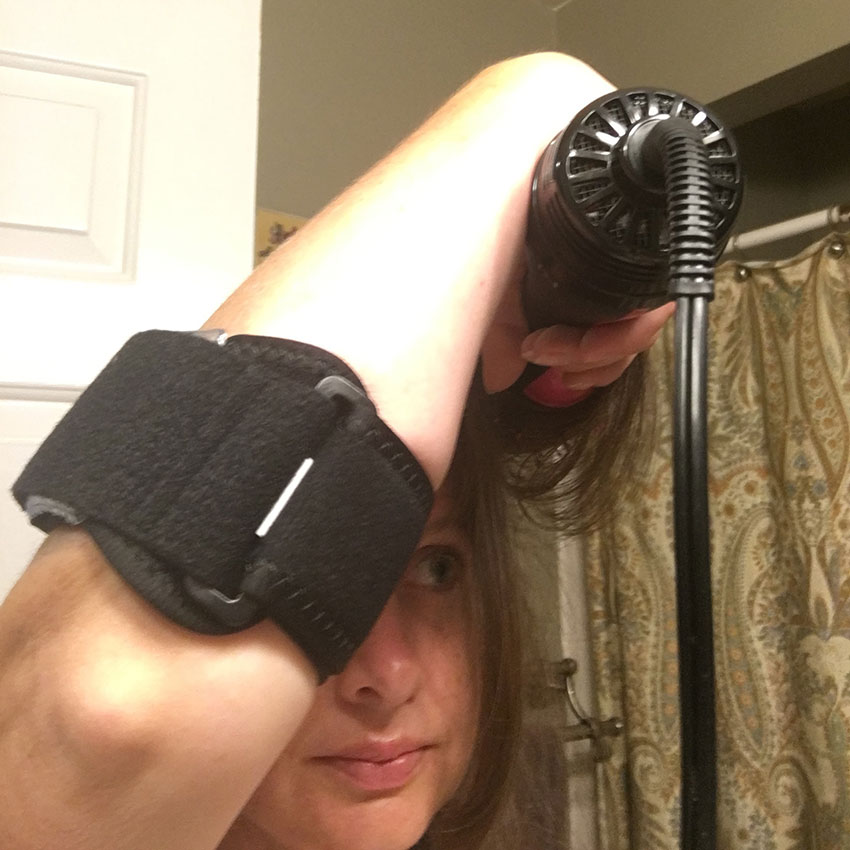
Lateral epicondylitis, also known as tennis elbow, is a common injury that occurs when the tendons surrounding the elbow suffer slight tears and become inflamed. Often, this is the result of repetitive stress on the forearm, such as from typing, painting, pounding a hammer, or — you guessed it — playing tennis. If the pain you’re feeling is concentrated on the inside of the arm, then you’re likely suffering from a similar condition called medial epicondylitis, or golfer’s elbow. The treatments for these two conditions are largely the same.
Most cases of tennis elbow simply go away on their own. But if you’re suffering from a severe case like I clearly was, it’s wise to take some steps to alleviate the pain and inflammation, or you could end up with a chronic case that may eventually need surgery to correct.
Tennis Elbow Treatment #1: RICE Method (Rest, Ice, Compression, Elevation)
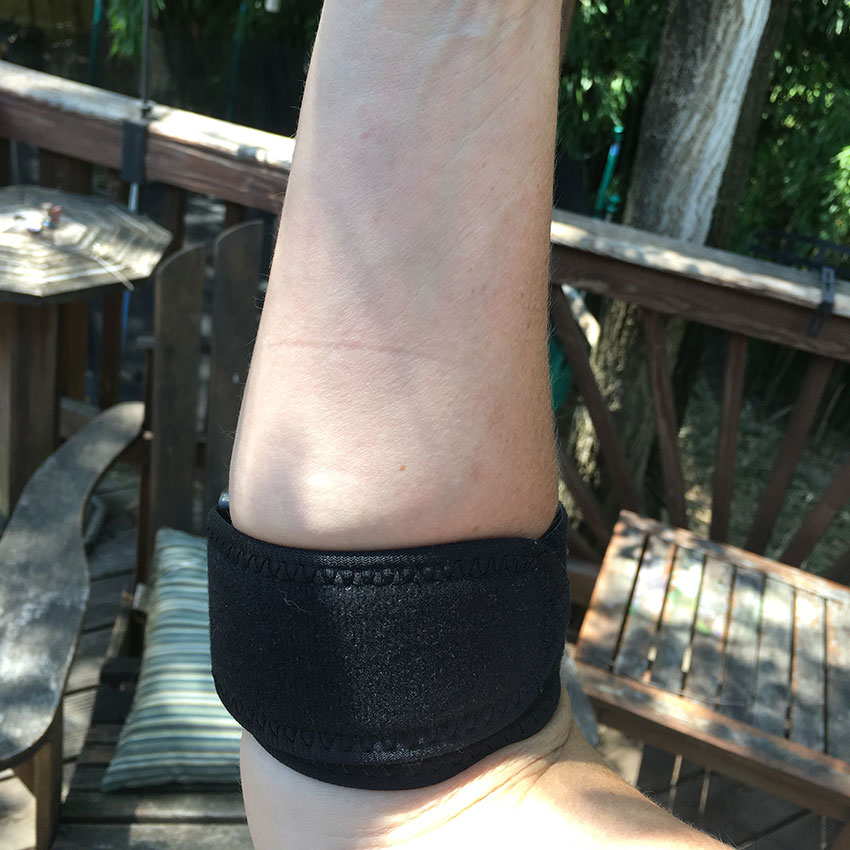
As with many orthopedic injuries, when tennis elbow sets in, the best thing to try first is the RICE method: rest, ice, compression, and elevation. When it comes to treating tennis elbow, it’s important to reduce inflammation as early as possible to have the best chance of recovery. Each step is outlined below.
Rest – When tennis elbow rears its ugly head, stop as much physical activity as possible. If your condition is bad enough, you’ll be forced to rest. For me, motions like lifting, reaching, and grabbing caused intense pain. If this is the case for you, try to rest until the pain subsides a bit.
Ice – The Dr. Axe website advises, “Try icing the elbow and forearm for 15 to 20 minutes at a time, several times per day.” I found that my tennis elbow symptoms became more severe as the day progressed, so I couldn’t wait to hop into bed each night with my laptop and an ice pack!
Compression – Wrapping an Ace bandage around your elbow and forearm can also reduce swelling. You can alternate between wrapping your elbow and using a tennis elbow strap when you need more mobility.
Elevation – Elevating the arm, something you can do while icing it, can help alleviate inflammation, which is key to reducing pain, especially with tendon-related injuries.
Tennis Elbow Treatment #2: Exercises
It was about a week after my tennis elbow began that I felt ready to incorporate some simple stretches and exercises to loosen the muscles and tendons without creating further strain or irritation.
I followed some of the tennis elbow stretches from Dr. Axe, which I’ve outlined below along with pictures for you to get an idea of how they are performed. When incorporating tennis elbow exercises into your regimen, remember to stop if it begins to hurt or make you feel weak, and never use more weight than you feel comfortable with.
1. Wrist Curls

Place your arm down on a table with your palm up and let your hand hang over the edge. Holding a very light weight, curl your wrist upward and back down slowly. When you’re suffering from tennis elbow, this stretch feels so good. If it does not, you’re probably using too much weight. I used five pounds, but even three pounds would be effective for this stretch.
2. Tricep Stretch

You’re probably familiar with this old favorite tricep stretch. Simply stretch your arm behind your head, bending at the elbow, and use your other arm to put gentle pressure on the elbow to stretch the tricep muscle.
3. Forearm Stretch
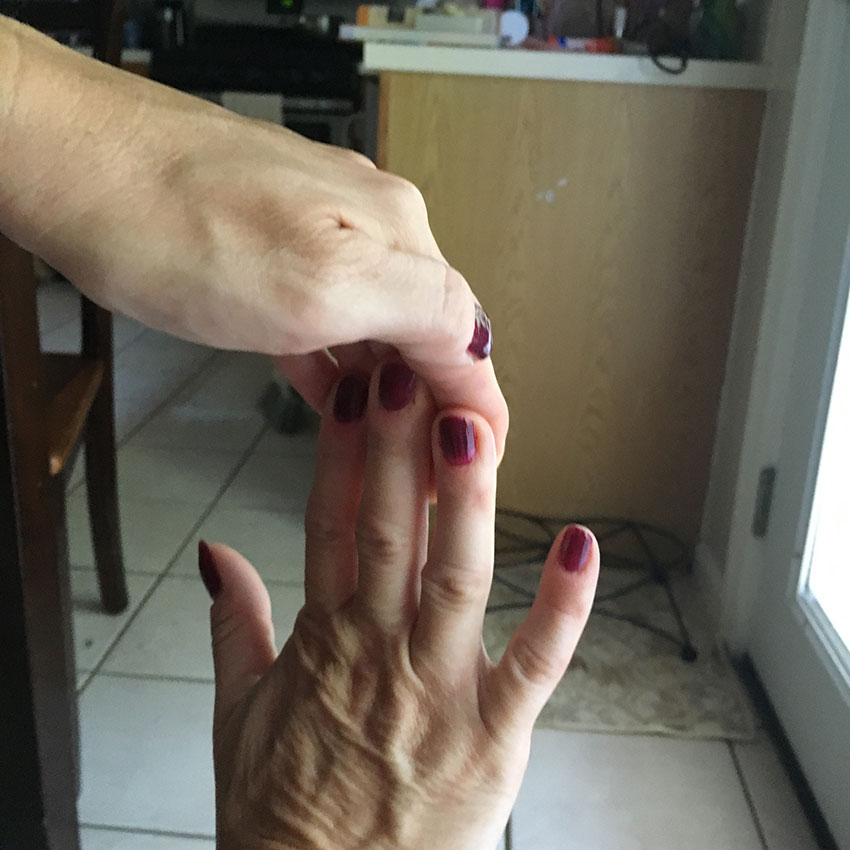
This simple stretch is one of the most effective stretches, since it gently works the muscles of the forearm. Tight muscles in the forearm can exacerbate the pain of tennis elbow.
To do this stretch, simply extend your affected arm in front of you, then use your other hand to gently pull back on your fingers (for a good wrist stretch) or gently press down on your fingers (for a good forearm stretch). I found this stretch to be a bit painful, so I had to take it easy. After a week, I’m still not able to completely straighten my arm. If this is the case for you, be sure not to push yourself too hard, since the tendons are still healing.
Tennis Elbow Treatment #3: Essential Oils
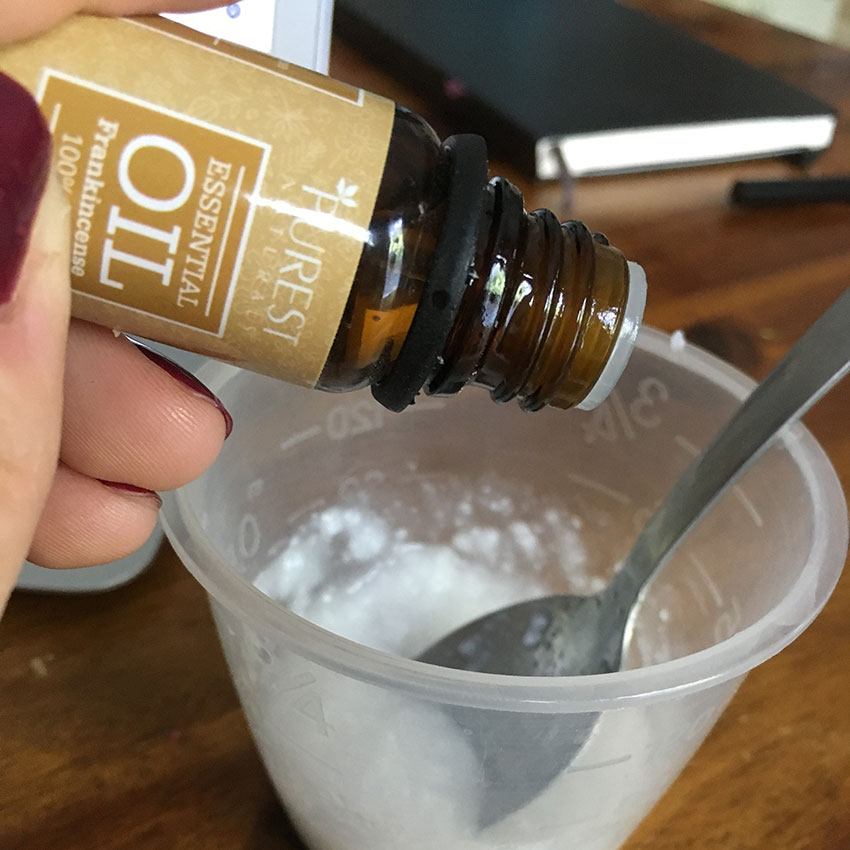
If I'm being honest, I’m not a huge believer in essential oils, so I knew there was no way that any essential oil was going to cure the intense pain I was feeling in my right arm. However, I figured maybe I could use essential oils to supplement my tennis elbow treatment. It turns out I was on to something. Here’s what Dr. Axe has to say about using essential oils to treat tennis elbow: “Peppermint essential oil can reduce pain, while frankincense increases healing by decreasing inflammation.”
Looking through my stash of essential oils, I found that I had both. Perfect! So I took some coconut oil and added 10 drops of peppermint oil and 10 drops of frankincense to it. I chose to put the mixture in the refrigerator to create a cooling balm to rub on my elbow before I applied the ice pack. I highly recommend trying it!
Tennis Elbow Treatment #4: Tennis Elbow Strap

My mom persuaded me to try a tennis elbow strap. I was hesitant at first, because in my opinion, there are very few products that actually do what they say they do. But take heart — this is definitely one of them! The tennis elbow strap took my pain from severe to moderate almost instantly.
A tennis elbow strap is a relatively inexpensive and simple strap that wraps around your forearm about two fingers’ width below your elbow joint. According to Physio Works, “The tennis elbow brace redirects the stressful forces away from the injured area, which reduces pain while protecting the healing area.”
I wore mine for most of the day for several days on end to give my elbow the best chance to begin healing. You can wear the strap as long as you want, but I personally wouldn’t recommend sleeping in it. I was concerned about losing circulation (if I rolled onto my arm while wearing the strap) and generally being uncomfortable, so I chose not to sleep in it, and instead continued using the ice pack at night.
The Best Way to Heal Tennis Elbow
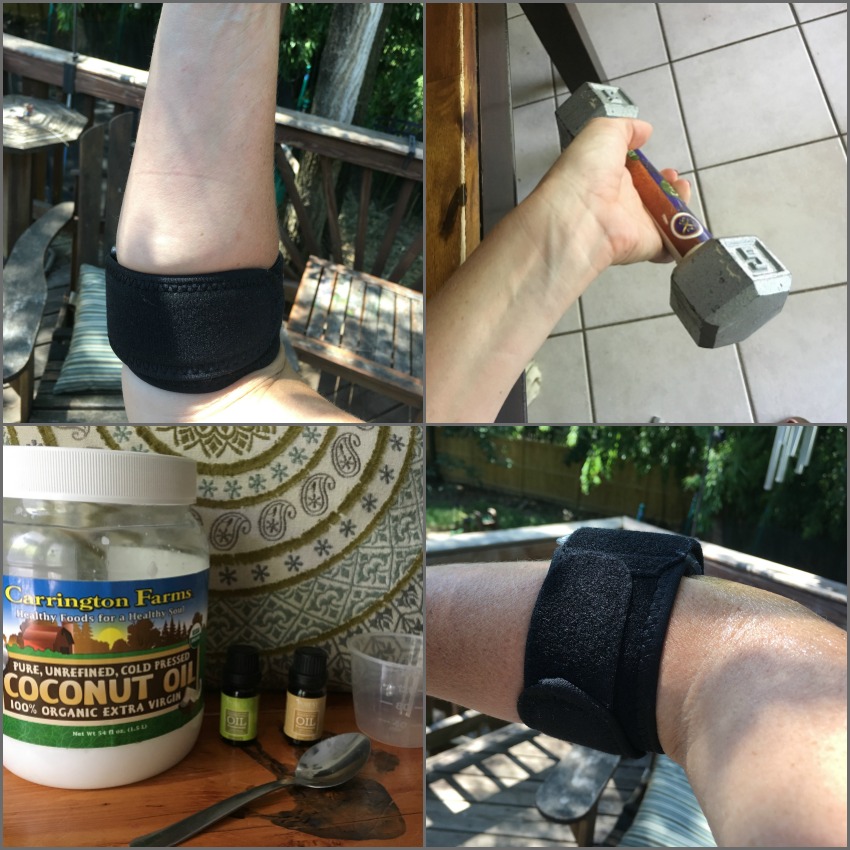
After trying all these methods, I found that the best way to get tennis elbow relief is to actually incorporate all of them.
Without a doubt, the tennis elbow strap is super effective at reducing pain and allowing the tendons to begin healing without the concern of repetitive injury to the area. However, if you’re suffering from tennis elbow that’s more severe, incorporating the RICE method periodically can only help. And like I mentioned, the essential oils combined with the ice felt so good on my sore arm. The stretches didn’t necessarily reduce my pain, but they are probably important to strengthen muscles and increase flexibility in the affected arm.
If you plan on trying any of these techniques the next time your tennis elbow flares up, please SHARE this article!




